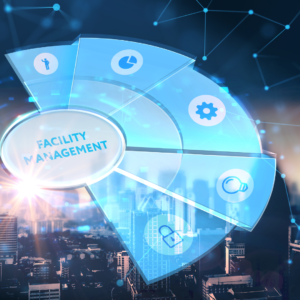As the world grapples with environmental challenges, the role of facilities management becomes increasingly critical. In Australia, where natural beauty and ecological diversity abound, adopting sustainable practices is not just a choice—it’s a responsibility. We wanted to cover some strategies that facilities management such as Intaus Group employ to minimise environmental impact, reduce energy consumption, and promote sustainability within facilities across the country.
 1. Energy Efficiency: The Low-Hanging Fruit
1. Energy Efficiency: The Low-Hanging Fruit
Audit and Benchmark
Start by conducting an energy audit to understand your facility’s energy consumption patterns. Benchmark your performance against industry standards and identify areas for improvement. Consider using tools like the National Australian Built Environment Rating System (NABERS) to assess energy efficiency.
Lighting Upgrades
Upgrade to energy-efficient lighting systems. Replace incandescent bulbs with LEDs, install motion sensors, and utilise natural light wherever possible. Lighting consumes a significant portion of a facility’s energy, so optimising it can yield substantial savings.
HVAC Optimisation
Heating, ventilation, and air conditioning (HVAC) systems are major energy consumers. Regular maintenance, smart thermostats, and zoning can enhance efficiency. Explore renewable energy options like solar panels or geothermal systems.
2. Waste Reduction and Recycling
Waste Audits
Conduct waste audits to understand the types and volumes of waste generated. Implement source separation and recycling programs. Encourage employees to reduce, reuse, and recycle. Partner with local recycling facilities to ensure proper disposal.
Circular Economy Practices
Embrace the circular economy model. Purchase products made from recycled materials, and design spaces with durability and recyclability in mind. Consider refurbishing furniture rather than replacing it.
3. Water Conservation
Smart Irrigation
Australia’s water scarcity makes efficient irrigation crucial. Install smart irrigation systems that adjust watering schedules based on weather conditions and soil moisture levels. Collect rainwater for non-potable uses.
Low-Flow Fixtures
Upgrade faucets, toilets, and showers to low-flow models. Educate occupants about water-saving practices. Fix leaks promptly to prevent water wastage.
4. Indoor Air Quality and Green Spaces
Natural Ventilation
Design buildings to maximise natural ventilation. Use operable windows and atriums to improve air circulation. Indoor plants not only enhance aesthetics but also purify the air.
Biophilic Design
Incorporate biophilic elements—such as green walls, rooftop gardens, and indoor plants—into your facility. Studies show that exposure to nature positively impacts well-being and productivity.
5. Collaborate and Educate
Stakeholder Engagement
Involve occupants, vendors, and contractors in sustainability initiatives. Create awareness campaigns, workshops, and training sessions. Foster a culture of environmental responsibility.
Certifications and Recognition
Pursue certifications like NABERS, Green Star, or LEED. These demonstrate your commitment to sustainability and attract environmentally conscious clients.
Australia’s unique environment demands proactive sustainability efforts. By implementing these strategies, facilities managers can contribute to a greener future—one where our facilities harmonise with nature rather than exploit it. If you want to build a legacy of responsible stewardship for generations to come, then contact our team at Intaus Group and let’s put a plan together!